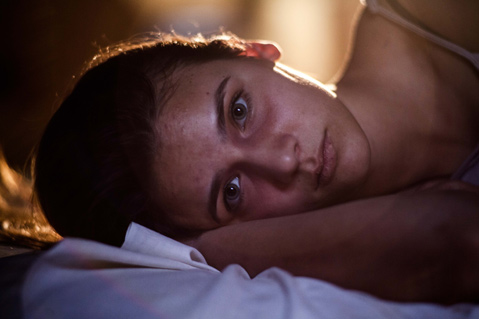Chrysalis
Director Joshua Stutzman

This harrowing short drama portrays at 15-year-old girl who is imprisoned by her uncle and abused in horrific ways. Art serves as an outlet of both expression and communication on her path toward freedom.
Which true events inspired this film?
After living in Sudan amongst former child soldiers, hearing their accounts and sharing in their heartache, Carissa and I began asking how we could effectively share their stories with others. We quickly saw similarities in child soldiers and victims of sex trafficking in America.
We began extensive research and found American girls who not only survived, but heroically overcame their past. We got in contact with them and they were open to share their experiences; their hope was to see the issue brought to light. From hours of conversation we combined the elements that affected us most into a single story.
Was there ever an option to tackle as a documentary, or did the narrative format offer a better route?
From our experience with several documentaries, we felt the best way to tell this story was through a narrative. With a narrative, you create an experience that allows people to get attached to characters and forget about “reality.” They’re taken into a world and are more open to accepting what takes place there. That was the goal: to transport people into an unknown world and hopefully in the end they felt something about the experience.
Getting victims to take the stand in situations like this must be a challenge for prosecutors. Was that an element you were trying to explain to the viewer?
It is a struggle for prosecutors, and anyone for that matter, to get survivors to talk and explain what happened. We experienced that firsthand when trying to write our story.
We wrote Riley (the young girl) as not being able to share at first, but when the right person came along that changed. The prosecutor happened to be the character with enough patience to wait for that moment.
For the victim, art was both an outlet and a form of communication. Is that something you have seen in real-life situations like this?
Absolutely. With the girls we spoke to and programs helping them, art was an element that came up repeatedly. The girls used it as an outlet and the people helping used it as a way to connect with them. At first art is a means of a escape, but eventually from that escape they become free enough to share their past and heal from their pain.
Do you think these sorts of imprisonments happen more often than we all think?
We know these sorts of imprisonments happen more than we think. We’re connected with local organizations that help victims in Santa Barbara and Ventura County. What surprises most people is that it’s happening in both large urban and secluded rural areas and not just overseas, but here in America. It’s one thing to be told sex trafficking is happening in your area, it’s another when you meet someone who actually overcame it and survived.
What is your Santa Barbara connection?
I’m connected to Santa Barbara though teaching film classes at the Santa Barbara High School Multimedia Arts and Design (MAD) Academy.



